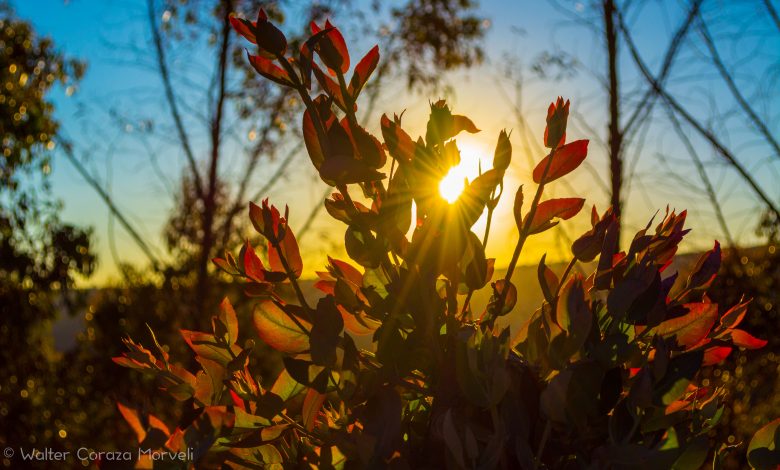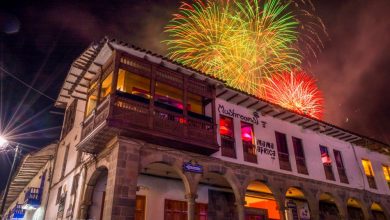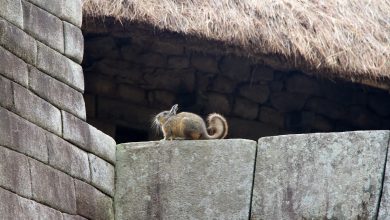A Magical Day Experiencing La Paz

The day turned chilly in El Alto, Bolivia. The cold wind scratched our faces but the sky was blue. There were very few clouds and they were little puffs of cotton in the sky.
It was a perfect day to go take pictures while enjoying the beautiful and spectacular scenery of La Paz. My great, life-long friend Walter and I walked along the edges of El Alto taking pictures. We had a good view of both cities, the one above and the one below, The City of Our Lady of La Paz. Seeing so much movement down below really impressed me.
We found a staircase going down, one with yellow railings. It looked like it went all the way down into the city of La Paz. We could see the football pitches that are to the side of the great cemetery. We saw the tremendous fair called 16th of July (16 de Julio). The streets of La Paz just came together like veins in an enormous body. Above them we saw the teleféricos, the gondolas that run along strong cables down into the city below.

On the other side we saw the great mountain that amazes with its majesty. We saw a natural and overwhelming sight organized around the Apu Illimani, the snow-clad peak that owns the horizon and all around, including its kin: Mururata and Huayna Potosí.
On seeing all this we knew which route we would take. We slowly walked down, in the direction of Illimani, enjoying the amazing spectacle and all along the way we took photographs.

At the bottom of the very long staircase it was now lunchtime. That much time had passed. We found a place where we could rest and eat. On a corner a casera, a woman dressed in a colorful, broad, pleated skirt and a big shawl that covered her shoulders, received us as if we were one of her regular clients.

Her stove, benches on the sides, her blue umbrella in between giving shade to diners, and her incomparable smile illuminating her inviting features all made the variety of dishes she offered seem like magic. There was albondigón (big meatball), picante de fideo (spicy pasta), and chanfainita. When you ordered one of those she gave you as a first course and a courtesy a concentrated beef soup. It opened your appetite and awakened desire to taste the food she offered.
Refreshed from her food we continued our photographic adventure. We roamed without a specific direction to the top of the hills on the other side above La Paz. Along the way we ran into many pedestrians in all the city’s streets. As we climbed up, the crowds diminished and all seemed much calmer. There was less noise. There were fewer vendors along these steep streets.

The houses were built with what we call material noble, that is cement and brick, in contrast to the common adobe. They blocked out view of the hills, but also formed part of our photography. Without feeling the passing of time, under an intense sun we continued until we arrived at the top.
As we went the temperature began dropping and it felt cooler. A splendid afternoon under a soon-to-set sun opened. It let off positive energy and filled us with its power. The golden hour for photography had begun. We were happy to be able to practice that great art.
We were among the eucalyptus trees and saw the birds play while flying from tree to tree. We saw the arid and rocky canyons that cut the sides of La Paz and compose a geography of fantasy. We saw a single squirrel, calm and taking in the last rays of sunshine. We could hear the echo of the rocks that fell from breezes blowing on them.

The sun’s glow illuminated the birds that flew above the rocky gashes. Tree leaves reflected to sun. Tough, bunch grass turned golden. The earth was changing color along with all the small stones along the way.
Time passed and the sky began to be painted with different bright colors like those of the wiphala, the Aymara flag.
We were pleased from having made the top and becoming part of this evening spectacle. You could see the smiles on our faces. A great happiness filled space. For a moment we could still see all the distance we had walked, the City of La Paz, it Main Square, its Bus Terminal, El Alto and above all the imposing mountains, Apu Illimani and Apu Huayna Potosi.
Everything seemed so close. Calm filled the air. We were far away from the noise of the city, its cars and artificial light.
As we came down day turned into night. We began to hurry since it was getting very dark and we soon arrived at the Plaza Murillo, the Main Square, thrilled with what we had lived.













